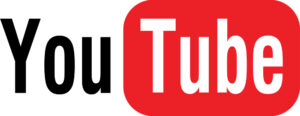In the dynamic world of digital content, video has emerged as the unrivaled king, captivating audiences on platforms such as YouTube, TikTok, and Instagram. Creators are constantly faced with the challenge of determining the optimal video length to maximize viewer engagement. In this comprehensive exploration, we will dissect the intricate relationship between video length and viewer engagement, analyzing how different durations impact audience retention. Moreover, we will provide actionable recommendations for finding the Goldilocks Zone for various types of content.
Understanding Viewer Behavior:
Before we delve into the impact of video length, it's crucial to grasp the intricacies of viewer behavior. In an era dominated by fleeting attention spans, audiences crave content that is not only informative but also concise and entertaining. The challenge for content creators lies in striking the right balance between delivering value and holding the viewer's attention.
Short-form Content: The Rise of Micro-Engagement
Short-form content, typically lasting between 15 seconds to 2 minutes, has experienced a meteoric rise on platforms like TikTok and Instagram Reels. This format capitalizes on the prevalent "scrolling culture," where viewers rapidly consume bite-sized content. The advantage of short-form videos is their ability to grab attention instantly, making them ideal for quick, entertaining, and shareable content.
Maintaining the Hook: A Structured Approach
1. Start with Impactful Visuals: Begin your short-form video with visually striking elements that immediately capture the viewer's attention. Whether it's an eye-catching image, an intriguing thumbnail, or a visually compelling introduction, set the stage for an engaging experience from the very start.
Example: If creating a cooking video, start with a close-up shot of the finished dish or a vibrant array of ingredients to pique curiosity.
2. Establish a Clear Theme or Message: Clearly communicate the theme or message of your video within the first few seconds. Viewers should quickly understand what the content is about, sparking interest and encouraging them to continue watching.
Example: In a fashion-related video, showcase a quick montage of outfits with a brief text overlay introducing the style or trend you'll be discussing.
3. Maintain a Swift Pace: Short-form content thrives on brevity and pace. Keep the momentum flowing by avoiding unnecessary delays or prolonged scenes. Each segment should contribute to the overall narrative, ensuring that viewers remain engaged without feeling that the content is dragging.
Example: In a travel vlog, use quick cuts between destinations, focusing on key moments to maintain a dynamic and energetic pace.
4. Utilize Text Overlays and Captions: Enhance viewer engagement by incorporating text overlays or captions that emphasize key points. This not only aids in conveying information effectively but also serves as an additional visual element to keep viewers invested.
Example: If creating a DIY tutorial, use on-screen text to highlight each step, making it accessible and engaging for viewers even without audio.
5. Create Narrative Tension: Infuse a sense of curiosity or tension within the narrative to keep viewers intrigued. Pose questions, present challenges, or tease upcoming content to maintain a level of suspense throughout the video.
Example: In a storytelling video, end each snippet with a cliffhanger or a question that encourages viewers to keep watching for the resolution.
6. Leverage Music and Sound Effects: The auditory experience is crucial in short-form content. Thoughtfully choose background music or sound effects that complement the mood and reinforce the overall atmosphere of your video.
Example: If producing a workout video, use energetic music that aligns with the pace and intensity of the exercises.
7. Encourage Interaction and Participation: Foster engagement by encouraging viewers to interact with the content. Pose questions, create polls, or use interactive elements that prompt viewers to participate actively.
Example: In a challenge video, invite viewers to share their attempts and tag you, creating a sense of community and participation.
Analyzing and Adapting:
After publishing your short-form video, closely monitor analytics, particularly focusing on viewer retention rates at different points in the video. Analyze comments and feedback to understand what resonates with your audience. Use these insights to refine your approach in future videos, adapting your content strategy to align more closely with your audience's preferences.
By structuring your short-form content with a deliberate and engaging approach, you can create a lasting impact, ensuring that viewers not only watch your video but also eagerly anticipate your next creation.
Long-form Content: Immersive Storytelling
In stark contrast to short-form content, long-form videos, spanning 10 minutes to several hours, offer an immersive storytelling experience. Platforms like YouTube have fostered the growth of long-form content creators, enabling in-depth discussions, tutorials, and documentaries. While long-form videos cater to a niche audience willing to invest time, they also risk losing viewers if the content isn't consistently engaging.
Capturing and maintaining the audience's attention is critical for long-form content. Creators must not only deliver valuable information but also ensure a steady pace to prevent viewer fatigue. Introducing breaks, incorporating engaging visuals, and employing storytelling techniques become essential tools to sustain interest throughout the extended duration. Additionally, understanding the audience's expectations and preferences for specific content types within the long-form category aids in crafting content that resonates.
Analyzing Viewer Retention:
Viewer retention stands as a critical metric in understanding how audiences respond to different video lengths. Platforms provide analytics tools that track the percentage of viewers who continue watching at various points in the video. This data is invaluable for content creators aiming to optimize their video length.
- Short-form Content and Retention:
Short-form videos often exhibit higher initial retention rates due to their quick and engaging nature. However, the challenge lies in sustaining this interest throughout the video. Creators must focus on maintaining a compelling narrative, utilizing visual hooks, and leveraging concise storytelling techniques to keep viewers engaged till the end.
Understanding the specific drop-off points in short-form videos provides valuable insights. Creators can strategically place captivating elements at these junctures to rekindle interest. Experimenting with different content structures and analyzing viewer feedback contribute to refining the craft of creating engaging short-form content.
- Long-form Content and Retention:
Long-form content may experience a gradual decline in retention rates, especially in the early minutes. Creators need to capture the audience's attention from the start and maintain a steady pace. Breaks, visuals, and engaging elements are essential to prevent viewer fatigue and increase the likelihood of viewers watching the entire video.
Analyzing viewer retention curves for long-form content unveils patterns that can guide content creators. Identifying segments with higher drop-off rates allows for strategic adjustments. Implementing viewer-friendly features such as chapter markers, summaries, or interactive elements within the video aids in maintaining engagement throughout the extended duration.
Recommendations for Different Types of Content:
For tutorial videos, educational content, and quick how-to guides, aim for a concise video length between 5 to 10 minutes. Break down complex topics into easily digestible segments, ensuring that each section adds value without overwhelming the viewer.
Educational content benefits from a structured format that addresses specific points efficiently. Creators can experiment with diverse instructional styles, such as step-by-step demonstrations, graphics, or interactive elements. Analyzing viewer engagement data helps refine the pacing and depth of educational content, ensuring it aligns with the audience's learning preferences.
- Entertainment and Storytelling:
Entertaining content, such as skits, vlogs, or storytelling, can benefit from both short and long formats. Short-form content (1-3 minutes) is excellent for quick laughs, while longer formats (10-20 minutes) allow for more detailed narratives and character development.
Understanding the genre and tone of entertainment content aids in determining the ideal length. Creators can experiment with the balance between brevity and depth, gauging audience reactions to find the optimal sweet spot. Analyzing audience comments and engagement metrics provides insights into the elements that resonate within each duration, guiding content creators in refining their storytelling approach.
- Product Reviews and Unboxings:
When creating product reviews or unboxing videos, aim for a sweet spot between 5 to 15 minutes. Provide thorough insights without unnecessary elaboration, keeping the viewer engaged throughout the evaluation process.
Product reviews require a balance between comprehensiveness and conciseness. Creators should prioritize key features, benefits, and user experiences while maintaining a pace that aligns with the viewer's expectations. Analyzing viewer comments and preferences assists in tailoring future product review content to meet the audience's specific interests.
- Livestreams and Q&A Sessions:
For livestreams and Q&A sessions, adapt your content length based on audience interaction. While some livestreams can be lengthy for dedicated audiences, consider breaking down Q&A sessions into shorter segments for easier consumption.
Livestreams and Q&A sessions offer a unique opportunity for real-time interaction. Creators can gauge audience engagement during the live session and use this feedback to adjust the content length in subsequent sessions. Offering highlights or condensed versions of livestreams as separate videos caters to audiences with varied preferences, ensuring content accessibility and engagement.
Conclusion:
In the realm of video content, there's no one-size-fits-all solution for optimal video length. The key is to understand your audience, content type, and platform dynamics. By analyzing viewer behavior, retention rates, and engagement metrics, content creators can tailor their videos to strike the right balance between engagement and value delivery. Whether it's a quick burst of entertainment or an in-depth exploration of a topic, finding the Goldilocks Zone ensures that your content resonates with viewers, keeping them hooked from start to finish.
Finally, mastering the art of video length involves a nuanced understanding of viewer behavior, content type, and platform dynamics. Creators who invest time in analyzing data, experimenting with formats, and adapting to audience feedback are better positioned to find their content's Goldilocks Zone. As the digital landscape continues to evolve, staying attuned to viewer preferences and refining content strategies will be key in maintaining a strong and engaged audience. The journey to finding the perfect video length is an ongoing process, and with each piece of content, creators inch closer to creating a lasting impact on their audience, fostering connections that withstand the test of fleeting trends and evolving platforms.












 A California Video Production Company
A California Video Production Company